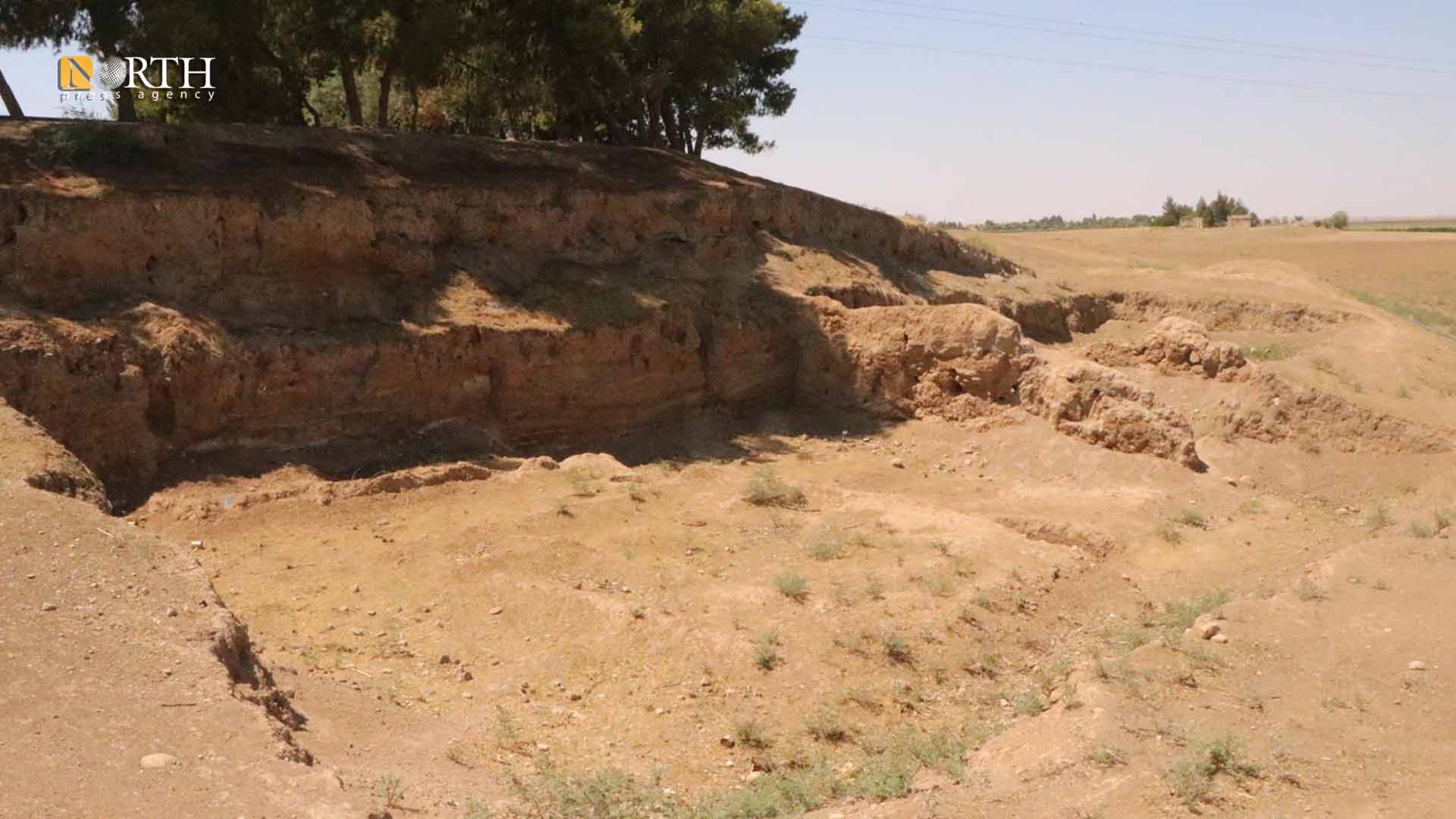TEL TAMR, Syria (North Press) – About 10 km west of the town of Tel Tamr, north of Hasakah, northeastern Syria, Saleh Selo, a guard accredited by the Department of Antiquities in Hasakah, inspects an archaeological site located on the front lines between government forces, Turkish forces, and Turkish-backed armed opposition factions.
Selo says that Tel Seker al-Aheimar, a very important archaeological site which now sits on the front line, has undergone many changes, and was subjected to deterioration as a result of changes in the weather and the fall of several Turkish artillery shells since the Turkish invasion and occupation of the areas of Sere Kaniye (Ras al-Ain) and Tel Abyad (Gire Spi) in 2019, and during the recent escalation.
According to the Department of Antiquities in Hasakah, Tel Seker al-Aheimar is one of the oldest archaeological sites in the Jazira region of northeast Syria, and dates back to 8000 BC, according to what was discovered by a Japanese mission that excavated the site before the Syrian war.
Recently, Turkish forces and the Turkish-backed armed factions escalated their bombardment on the towns of Tel Tamr and Zargan (Abu Rasin) north of Hasakah, and areas in Manbij, targeting inhabited villages and vital facilities in the area, in addition to bombing military vehicles in the countryside of Qamishli city.
Nearly impossible restoration
The Tel Tamr area includes 55 archaeological sites, including three sites that are currently under the control of Turkish forces and the Turkish-backed armed factions, and 15 sites located on the front lines, according to the Department of Antiquities in Hasakah.
Currently, Selo visits the archaeological sites assigned to him once or twice a month, due to the security difficulties and tensions recently witnessed in the region.
“We find it difficult to inspect them 2-3 times a month, we fear as they are on the front lines and we cannot always monitor them. Before these events we used to come 4-5 times a month. We were maintaining the site so that it would not be subjected to vandalism or any construction or other infringements that would take place,” he said.
With the passage of time, he actually notices erosion and vandalism in more than one archaeological site that was previously excavated, in addition to damage caused by climate change or the Turkish bombing of the region.
Selo points out that there are weather factors on these sites as a result of rain and wind, as most of them are subjected to sabotage, especially those located on the front line.
However, the Department of Antiquities in Hasakah says that the restoration process and the attempt to preserve the current shape of the archaeological sites are almost impossible at the present time due to the repeated bombing of the area.
During the recent military escalation, many sites were bombed, such as Tel al-Laban, Tawilat al-Waka’a, Tel al-Garabeit, and Tel Juma’a in Tal Tamr countryside, in addition to about seven sites on the Tel Tamr-Zargan line, according to Selo.
Security conditions
According to Selo, these sites are threatened with extinction over time if plans are not developed to preserve their current condition, unlike some other archaeological sites such as Tel Beyder in Hasakah and Tel Mozan in Amuda.
The Jazira region is of great importance because it contains 1,043 archaeological sites, according to official statistics of the Directorate of Antiquities in Hasakah, most of which are on the list of the United Nations Educational, Scientific and Cultural Organization (UNESCO), and the statues and sculptures found in these sites date back to various historical eras.
Adnan Beri, director of the Antiquities Department of the Autonomous Administration in Hasakah, said that they have plans to preserve what was discovered in these archaeological sites, but due to security conditions, they cannot implement them currently.
Foreign missions have excavated only 27 archaeological sites in Jazira, according to Beri.
“What we can do during this period is to educate the local community to preserve these archaeological sites,” he added in a telephone conversation with North Press.

